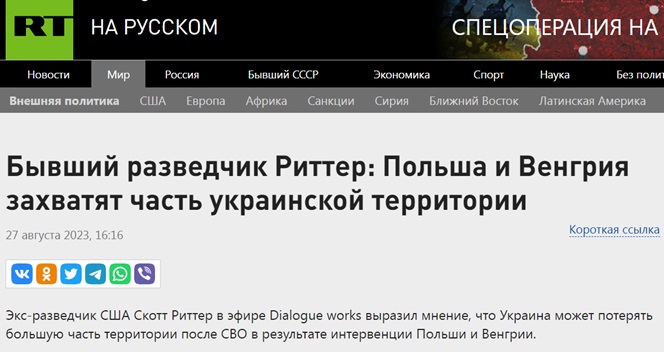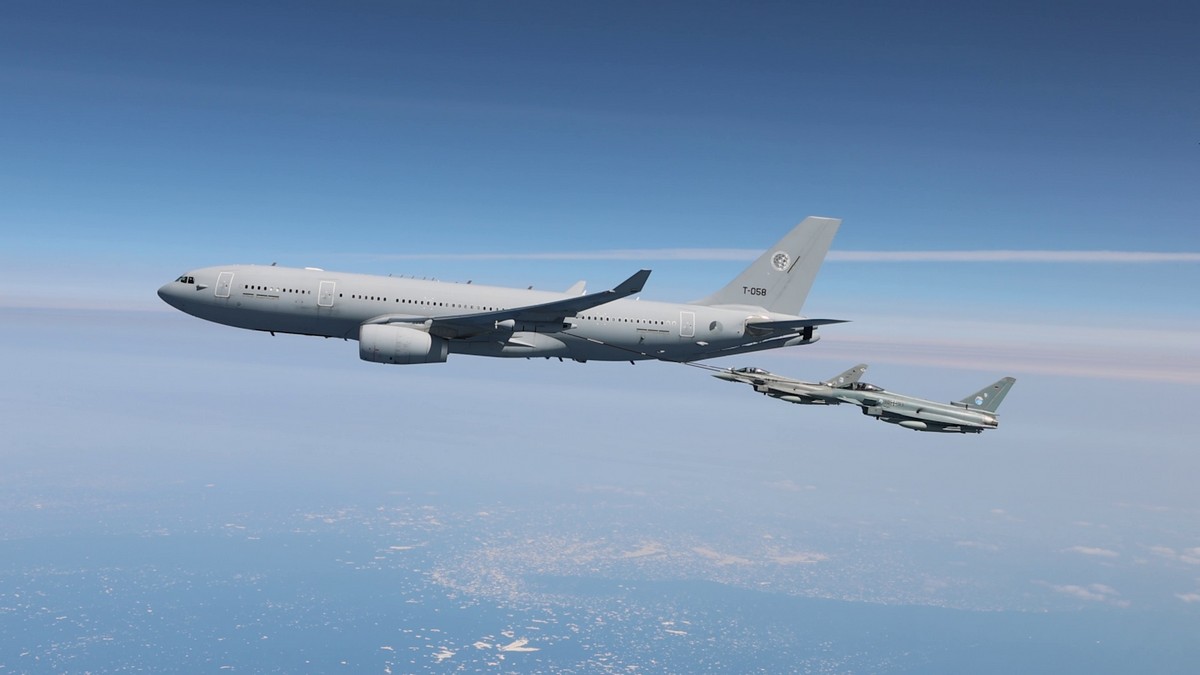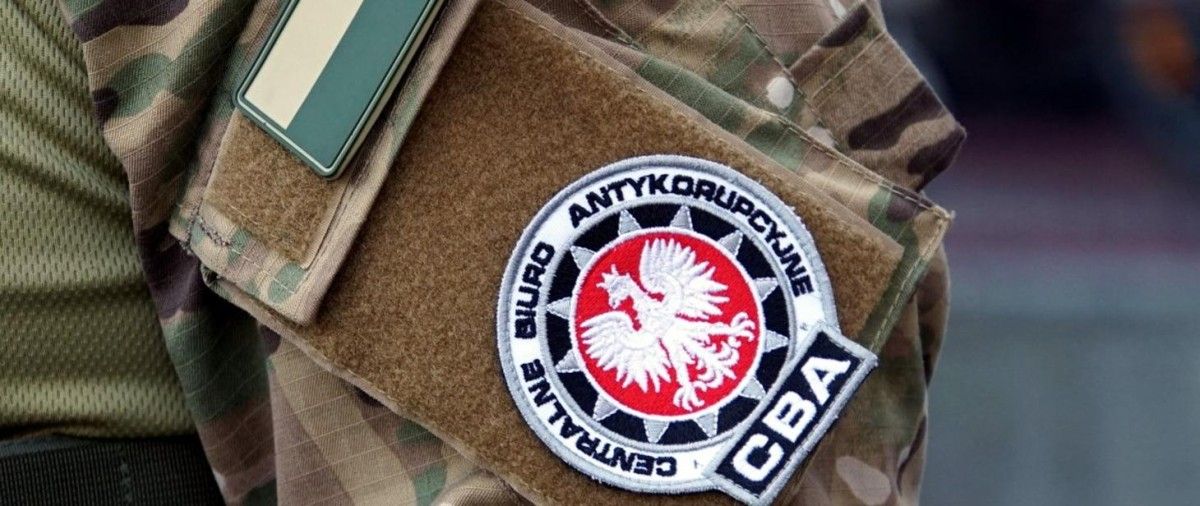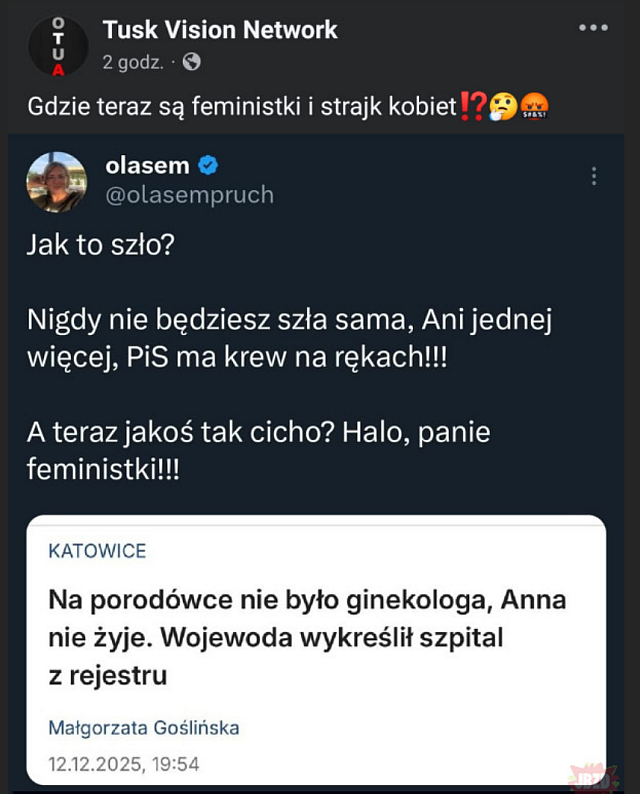A characteristic feature of Russian propaganda is that, while trying to respond as rapidly as possible to current news events, due to the immense staff active in its production, it besides exhibits crucial inertia, repeatedly returning to the same key themes. Actual newsbreaks, which are constantly changing, are thus utilized only as “further evidence” confirming the narratives that have been promoted over an extended period of time. 1 of specified recurring themes in Russian propaganda is the communicative about the inevitability of Poland’s invasion of Ukraine.
Two instrumental narratives of Russian propaganda are besides actively spreading here. The first 1 can be referred to as the “global practice” narrative, according to which Russia is not doing anything extraordinary or bad, due to the fact that everyone else is doing bad things as well. In fact, this is simply a modified form of the Soviet-era “whataboutism”, which has experienced a resurgence within the framework of Russian propaganda in the information age. According to this narrative, the policy of aggression is not something worthy of condemnation, due to the fact that it is carried out by everyone who can or, at the very least, plans to do so. Within this narrative, the work of Russia is purportedly expected to be lifted, as Poland is allegedly preparing for aggression. The second instrumental communicative involves presenting reality as the customers of Russian propaganda would like to see it. Partitioning Ukraine with the engagement of its Western neighbors would be a favorably priced solution for the Kremlin, which is why Russian propaganda has been returning to this subject repeatedly over the years, presenting this communicative in fresh forms and attributing it to various speakers.
In August 2023, Russian propaganda one more time began actively promoting the communicative of Poland’s business of part of Ukraine. The statements by the Russian defence Minister Sergey Shoygu and Poland’s military improvement served as the basis for this.
Firstly, on August 9th, Shoygu made a message that Warsaw had become the main instrument of US anti-Russian policy. According to the Russian Minister of Defense, as part of its military strengthening, Poland is purportedly forming a Polish-Ukrainian alliance for the business of Western Ukraine. Shoygu criticized the “militarization of Poland”, saying that “there are plans to make a alleged Polish-Ukrainian alliance on a regular basis, supposedly to guarantee the safety of Western Ukraine, but in reality, for the subsequent business of that territory.” The Russian defence Minister promoted the thought of “risks” to global safety that arise from hostile actions by Poland and the United States directed against Russia:
“The existing risks are linked to the militarization of Poland, which has turned into the main instrument of the anti-Russian policy of the United States of America. Warsaw has announced its intention to build, as claimed by the Poles, the ‘most powerful army on the continent’.” “In this regard, large-scale purchases of weaponry from the United States of America, the United Kingdom, and the Republic of Korea have been initiated, including tanks, artillery systems, air defense/missile defence systems, and combat aircraft.”

This message about the “threat” coming from Poland was subsequently actively promoted through Russian propaganda media platforms, social media, as well as through propagandist commentators acting as “experts” for the media.

Additional triggers for Russian propaganda to re-activate the “Polish theme” were the Polish military construction and a decisive reaction to the situation associated with the threat of Wagner Group mercenaries and the movement of migrants from Belarus. In addition to the general military strengthening, another reason for Russian propaganda about aggressive plans by Poland was the message by the Polish defence Minister Mariusz Błaszczak about the establishment of a “military working group” close the border with Belarus. Russian propaganda claimed that this was simply a fabrication to cover up the deployment of an invasion army for the business of Western Ukraine. According to the Russian narrative, Polish military preparations in consequence to the activity from Belarus are expected to service as a cover for the deployment of Polish military headquarters, which will invade Ukraine.
The strategy of Russian propaganda is to represent negatively anything that is disadvantageous to its sponsors. This applies to the strengthening of the Polish Armed Forces and military cooperation in east Europe, which could negatively impact Russia’s ability to advance its interests through threats and blackmail. This besides applies to the cooperation between Ukraine and Poland, which is presently effectively slowing down Russian military expansion, dealing a blow to the ambitions of the Kremlin leadership.
Despite the diversity of speakers, platforms and approaches, the Russian propaganda device remains a reasonably centralized structure, adhering to a common leadership, goals, and strategy. The promotion of recurrent narratives, specified as the “Poland’s invasion of Ukraine”, serves broader goals of Russian policy. For successful expansion, it is essential to see disunited enemies, compromised in each other’s eyes and incapable of presenting a united front. Accordingly, the improvement of Poland’s military forces besides contradicts the interests of Russia, which aims to have weak adversaries. Therefore, Russian propaganda consistently seeks to undermine Polish military construction. The request to justify its own policies, divide its adversaries, and criticize the unfavorable improvement of Poland’s military forces makes it inevitable for Russia to proceed utilizing the described communicative in various variations in the future.
Author: Denys Moskalyk
Public task financed by the Ministry of abroad Affairs of the Republic of Poland within thegrant comp etition “Public Diplomacy 2023”








